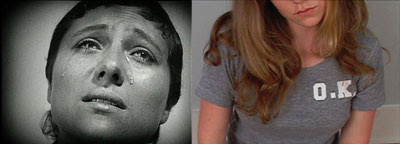
I know it’s un-hip to turn to the New York Times for inspirational art critique. Better, “they” say, to read something I wouldn’t know, because I would never know, because I’m not enough something.
But, two great articles this week prove “them” wrong. They say fuck ‘em and what’s even better, they do it eloquently.
The first by Holland Cotter says 2007 was a boring marketing scheme. The best work could not be grasped, could not be sold.
The second by Roberta Smith reminds us that the artist’s job “is to operate outside accepted limits” and turn “intangibles […] into a kind of material.”
In 2008, come on, let’s do it. Let’s turn inwards, bring out what’s there, despite trend and sale-ability, and make some indescribable thingy, indescribable until someone else puts some words on it for us. Let’s read or not, talk to each other or not, take some time, or no time at all, work together, or in total isolation, and in the great words of the Nike corporation, “Just.”





















































